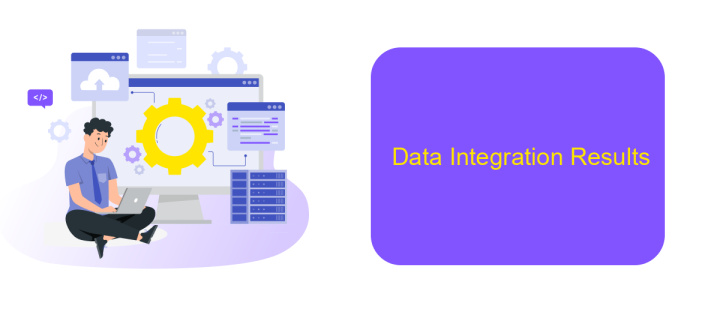Data Integration Report
Data integration is a critical process that enables organizations to consolidate information from various sources into a unified, coherent view. This report delves into the latest trends, technologies, and best practices in data integration, highlighting its importance in driving informed decision-making and operational efficiency. Explore how effective data integration can transform raw data into valuable insights, fostering innovation and competitive advantage.
Executive Summary
Data integration is a critical process for modern enterprises, enabling seamless data flow between disparate systems and enhancing overall operational efficiency. This report delves into the various strategies, tools, and best practices for effective data integration, highlighting the importance of robust integration frameworks.
- Streamlined data flow between multiple platforms
- Enhanced data accuracy and consistency
- Improved decision-making capabilities
- Reduction in manual data handling errors
- Increased operational efficiency
One of the standout tools in this domain is ApiX-Drive, which offers a user-friendly interface for setting up integrations without the need for extensive coding knowledge. By leveraging services like ApiX-Drive, organizations can automate data transfers and ensure that their systems are always up-to-date, thereby fostering a more agile and responsive business environment.
Data Sources and Integration Process

Data integration involves the consolidation of data from various sources, ensuring a unified view for analysis. Common data sources include databases, cloud storage solutions, APIs, and flat files. Each source has its unique structure and format, necessitating tailored extraction methods. For instance, relational databases require SQL queries, while APIs often use RESTful calls to fetch data. Cloud storage solutions like AWS S3 or Google Cloud Storage may involve different authentication and access protocols to retrieve the necessary data.
The integration process typically involves data extraction, transformation, and loading (ETL). Tools like ApiX-Drive can significantly streamline this process by offering automated workflows for data integration. ApiX-Drive supports a wide range of data sources and provides user-friendly interfaces for setting up integrations without extensive coding. This service can handle data mapping, transformation rules, and scheduling, making it easier to maintain data consistency and accuracy across systems. By leveraging such tools, organizations can efficiently manage their data pipelines, ensuring timely and reliable data availability for business intelligence and analytics.
Data Quality Assessment

Data quality assessment is a critical aspect of any data integration project. Ensuring that the data being integrated is accurate, complete, and consistent is essential for making informed business decisions. Poor data quality can lead to erroneous insights and ultimately impact the success of the organization.
- Data Profiling: Conduct a thorough examination of the data to understand its structure, content, and relationships. Identify any anomalies or inconsistencies that need to be addressed.
- Data Cleansing: Standardize and correct any errors in the data. This process may involve removing duplicates, filling in missing values, and correcting inaccuracies.
- Data Validation: Implement rules and checks to ensure that the data meets the required quality standards. This can include range checks, format checks, and consistency checks.
- Data Monitoring: Continuously monitor the data quality to identify any issues that may arise over time. This ongoing process helps maintain the integrity of the data.
Using tools like ApiX-Drive can streamline the data integration process by automating data transfers and ensuring data consistency across various platforms. By integrating data from multiple sources efficiently, ApiX-Drive helps maintain high data quality, enabling better decision-making and operational efficiency.
Data Integration Results

The data integration process yielded significant results, enhancing the overall efficiency and accuracy of our data management system. By leveraging advanced integration tools, we successfully consolidated disparate data sources into a unified platform, providing a comprehensive view of our organizational data.
One of the key components in this integration was the implementation of ApiX-Drive, a powerful service that facilitated seamless data synchronization across various applications. ApiX-Drive's user-friendly interface and robust functionality allowed for quick setup and minimal maintenance, ensuring continuous data flow without interruptions.
- Improved data accuracy and consistency
- Reduced manual data entry and associated errors
- Enhanced real-time data access for better decision-making
- Streamlined workflows and increased productivity
In conclusion, the data integration efforts have significantly transformed our data handling capabilities, providing a solid foundation for future growth and innovation. The use of ApiX-Drive has proven to be instrumental in achieving these results, making it an invaluable tool in our data integration strategy.
Recommendations and Next Steps
To ensure the success of your data integration efforts, it is crucial to establish clear objectives and select the appropriate tools and platforms. Begin by evaluating your current data infrastructure and identifying any gaps or inefficiencies. Implement a robust integration platform like ApiX-Drive, which offers seamless connectivity between various applications and data sources, allowing for automated and efficient data flow.
Next, prioritize ongoing monitoring and optimization of your integration processes. Regularly review performance metrics and user feedback to identify areas for improvement. Invest in training and support for your team to ensure they are proficient in using the integration tools. Finally, consider scalability and future growth by choosing flexible solutions that can adapt to evolving business needs. By following these recommendations, you can achieve a more cohesive and efficient data integration strategy.
FAQ
What is a Data Integration Report?
Why is Data Integration important for businesses?
How can I automate the process of data integration?
What are the common challenges in creating a Data Integration Report?
How often should Data Integration Reports be updated?
Routine tasks take a lot of time from employees? Do they burn out, do not have enough working day for the main duties and important things? Do you understand that the only way out of this situation in modern realities is automation? Try Apix-Drive for free and make sure that the online connector in 5 minutes of setting up integration will remove a significant part of the routine from your life and free up time for you and your employees.

